Trees Birds Mammals Fish Amphibians Reptiles
Wild Algarve
Bookshop
Tricholoma sciodes (Pers.) C. Martín - Beech Knight
Phylum: Basidiomycota - Class: Agaricomycetes - Order: Agaricales - Family: Tricholomataceae
Distribution - Taxonomic History - Etymology - Identification - Culinary Notes - Reference Sources
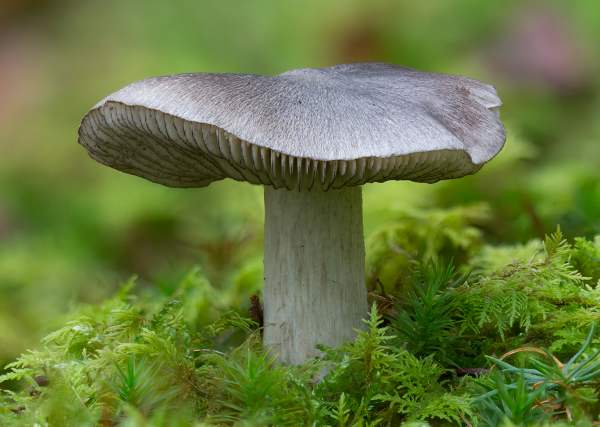
An uncommon find under broad-leaf trees, almost invariably on calcareous soil, Tricholoma
sciodes often has reddish or lilaceous tints, which are a help in
identification; however, there are several other greyish-capped lookalikes in the genus Tricholoma and separating them with confidence is difficult.
The Beech Knight is an inedible mushroom that appears in autumn, often in small groups beneath mature beech and oak trees.
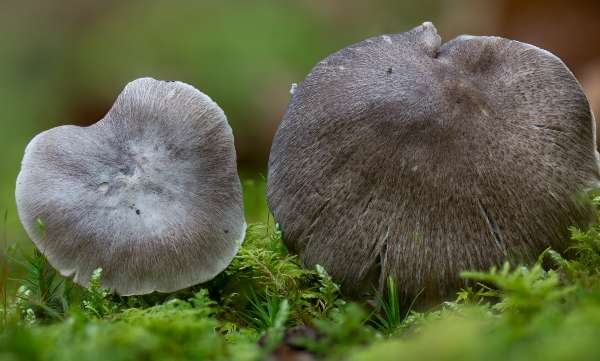
Distribution
In Britain and Ireland this is one of the more common of the many greyish 'knights', and it is found throughout Britain and Ireland. This toxic Tricholoma toadstool is found also in many countries on mainland Europe.
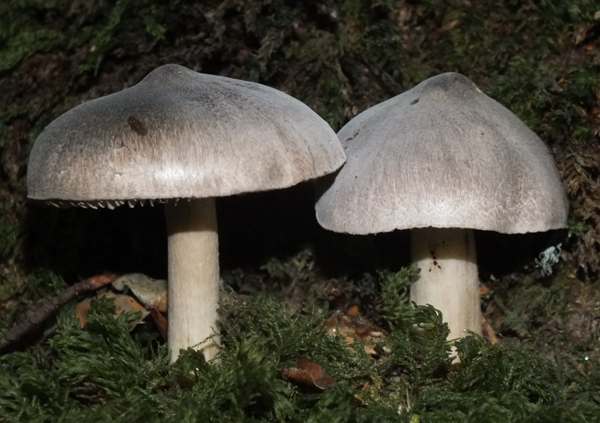
Taxonomic history
When Christiaan Hendrik Persoon described this mushroom scientifically in 1801 he established it basionym, giving it the name Agaricus sciodes. (In the early days of fungus taxonomy, most of the gilled mushrooms were included initially in the genus Agaricus, but the vast majority have since been relocated in other newer genera to leave on the 'true mushroom' in a more manageable Agaricus genus.) It was French naturalist Charles-Édouard Martin (1847 - 1937) who in a 1919 publication established the currently-accepted scientific name as Tricholoma sciodes.
Synonyms of Tricholoma sciodes include Agaricus murinaceus, Tricholoma murinaceum, Agaricus sciodes Pers., Tricholoma virgatum var. sciodes (Pers.) Konrad, and Tricholoma sciodellum P. D. Orton.
Etymology
The generic name Tricholoma means 'with hairs on the edge', which is true of only a minority of species in this genus.
The specific epithet sciodes comes from the Greek word skiá meaning shadow, and so sciodes means shady. (I am grateful to Dubravko Furlan, who kindly contributed this information.)
Identification guide
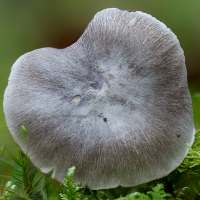 |
Cap
Up to 12cm in diameter when fully mature, the
caps are usually grey, darker in the centre and with radial lines.
Initially convex, the caps flatten, sometimes with a slight umbo. |
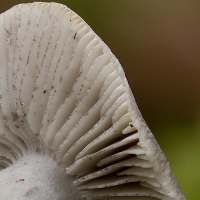 |
Gills
Moderately well spaced apart, the
sinuate gills are white with tiny dark flecks on their edges.
Stem
Typically 10 to 20mm in diameter and 4 to 8cm long,broadening slightly towards the base, the stem is off-white and has longitudinal grey fibrils, most noticeable in its central region. |
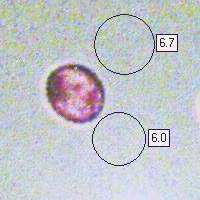 |
Spores
Ellipsoidal, smooth, 6.5-7.5 x 5-6.5μm, with a hilar appendage; inamyloid.
Spore print
White. |
Odour/taste |
Slightly earthy odour; taste bitter. |
Habitat & Ecological role |
Mycorrhizal, in broad-leaf woodland, mainly with Beech trees and oaks. |
Season |
July to October in Britain and Ireland. |
Similar species |
Tricholoma terreum is similar
in appearance but occurs mainly in coniferous woodland.
Tricholoma scalpturatum has yellowing gills and cap edges and its spores are much narrower. |
Culinary Notes
Tricholoma
sciodes is a toxic toadstool and should not be gathered for eating. Some other grey- and grey-brown members of this genus are also poisonous, making it dangerous to include any but the most distinctive of of the 'knights' in mushroom dishes... and because Tricholoma species are notoriously variable in appearance we do not include any of them in our mushroom menus.
Reference Sources
Fascinated by Fungi, 2nd Edition, Pat O'Reilly 2016, reprinted by Coch-y-bonddu Books in 2022.
Kibby, G (2013) The Genus Tricholoma in Britain, published by Geoffrey Kibby
BMS List of English Names for Fungi
Dictionary of the Fungi; Paul M. Kirk, Paul F. Cannon, David W. Minter and J. A. Stalpers; CABI, 2008
Taxonomic history and synonym information on these pages is drawn from many sources but in particular from the British Mycological Society's GB Checklist of Fungi.
Acknowledgements
This page includes pictures kindly contributed by David Kelly.
Top of page...
Fascinated by Fungi. Back by popular demand, Pat O'Reilly's best-selling 450-page hardback book is available now. The latest second edition was republished with a sparkling new cover design in September 2022 by Coch-y-Bonddu Books. Full details and copies are available from the publisher's online bookshop...